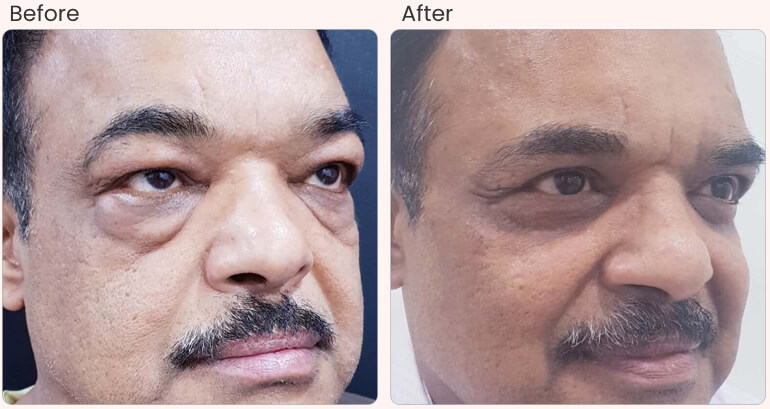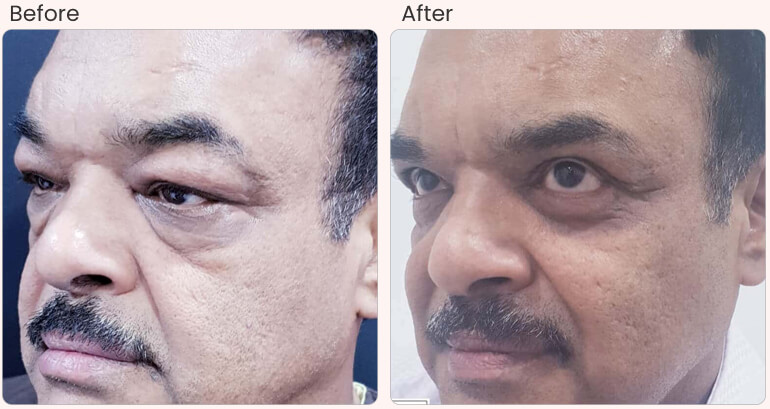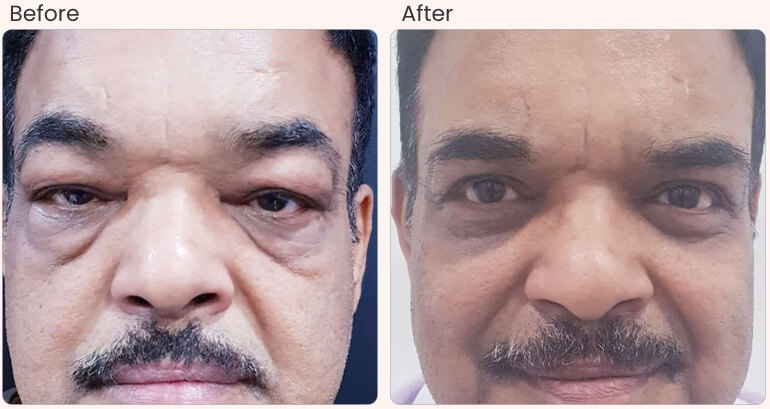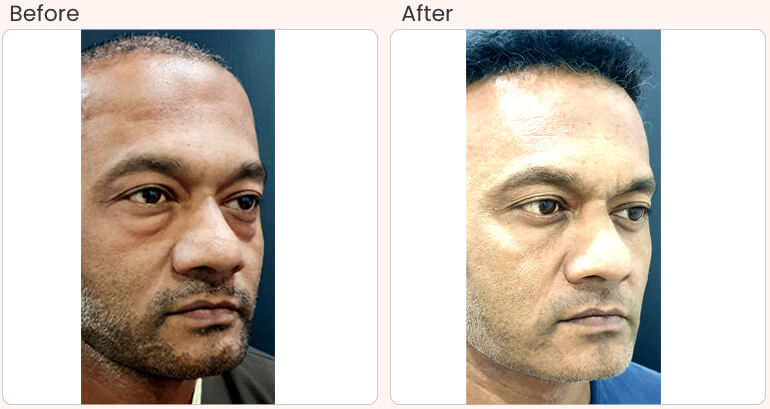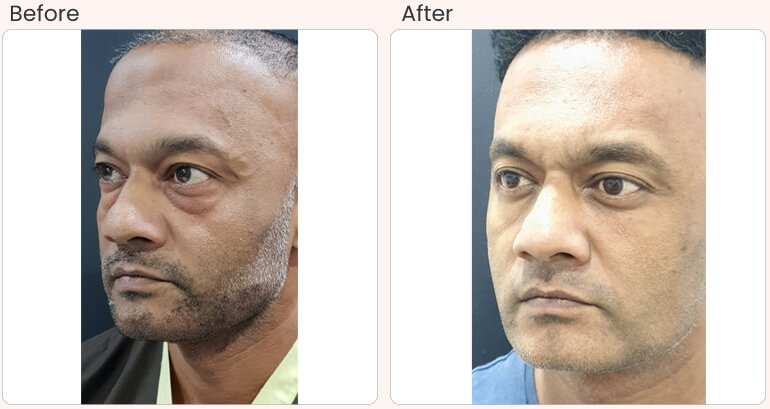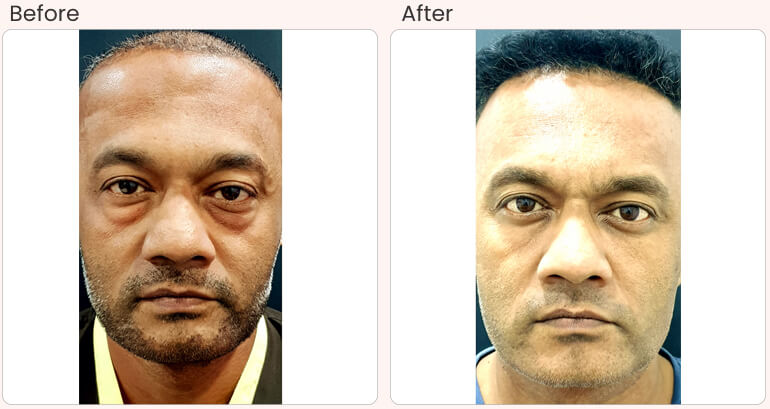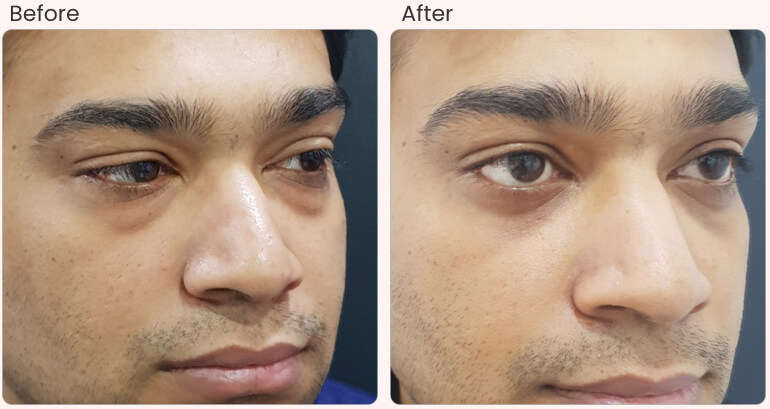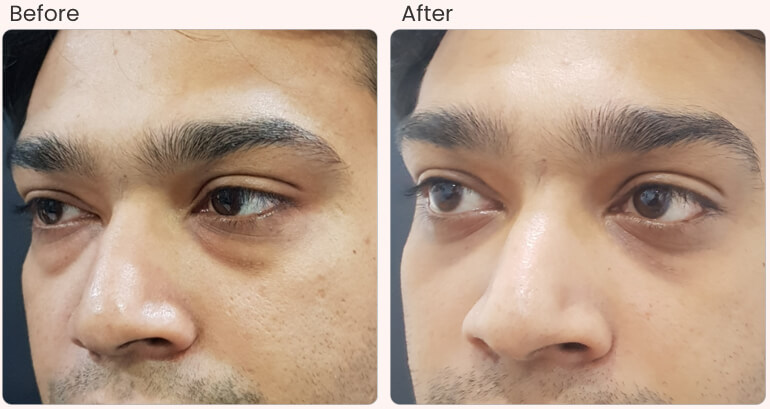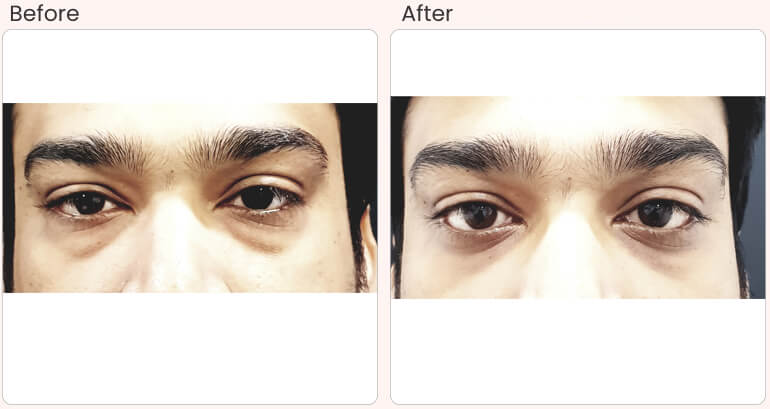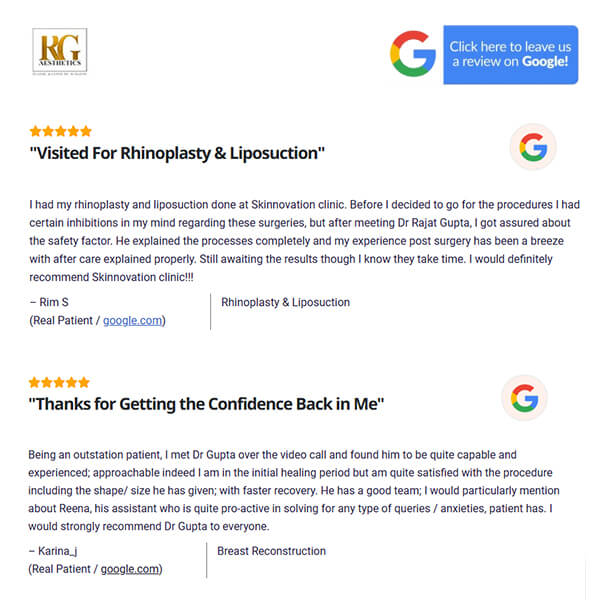Blepharoplasty
What Is Blepharoplasty?
The eyes are the most expressive part of the face. Droopy eyelids give a face a haggard and tired appearance. It makes one look old and worn-out.
Blepharoplasty or Eyelid Rejuvenation is a procedure that helps to remove and tighten excess eyelid skin for a more alert and youthful appearance. Sometimes Blepharoplasty can also help to improve your vision by providing a less obstructed field of view, once droopy eyelids are improved.
Blepharoplasty can give you a younger, fresher look and a healthier feel. It can be performed on upper eyelids, lower eyelids, or both at the same time.
Download A Patient Guidebook Of Blepharoplasty Surgery ?
Blepharoplasty Surgery Best Results / Before & After
Why Blepharoplasty Surgery Is Done?
Blepharoplasty Surgery procedure is done if:
- You have tired looking eyes and drooping eyelids
- You have thin, crepey or crepe-paper skin of the eyelids
- You have very dark circles under the eyes or puffy bags under the eyes
- You have deep tear troughs
- You are experiencing hooding of the eyelids
- You have very prominent crows feet
What Blepharoplasty Surgery Can / Can’t Do
- Can
- Make your eyes appear bigger and younger
- Help you get rid of droopy eyelids
- Remove eyebags
- Improve your peripheral vision by removing excess skin and fat
- Give you lifelong results
- Can’t
- Make you go blind
- Change your eye colour
- Give you someone else’s eyes
Don’t take biggest decision of life
Without getting complete information!
How You Should Prepare For Blepharoplasty Surgery?
- Consult a board certified plastic surgeon
- The surgeon will prescribe some blood tests
- The surgeon will prescribe medications or adjust your current medications
- Stop smoking
- Avoid any medication not prescribed by the surgeon, like aspirin or any anti-inflammatory drugs. They can increase bleeding during the surgery
- Stop taking any recreational drugs, such as cocaine
- Arrange for a driver to take you back home post the surgery or someone to stay with you in case one night admission is required
What is the Procedure of Blepharoplasty Surgery?
Blepharoplasty can be performed on upper eyelids, lower eyelids, or both at the same time. Surgeon will make precise markings to designate where excess skin and fat pads need to be removed. Some underlying muscle may also be removed. On these markings, incisions are made in the natural folds of the eyelid, in the crease of the upper eyelid and just beneath the lashes or behind the lower eyelid.
After making the incisions fat and muscle tissues are removed, surgical instruments such as scalpels, surgical scissors, radio-frequency cutting devices and sometimes cutting lasers. Once all the excess material is removed, sutures or tissue adhesives are applied carefully to smoothen the areas around the eyebrows and eyelids.
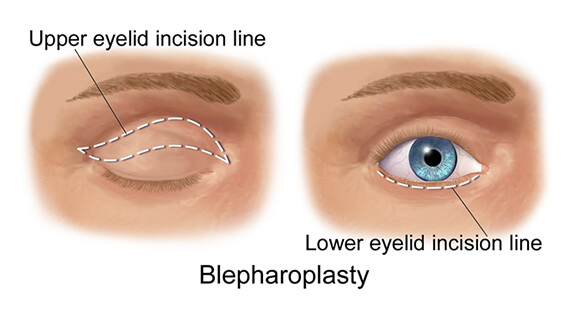
Recovery After Blepharoplasty Surgery?
- Blepharoplasty is an outpatient procedure, which means you will be able to go home on the same day of surgery.
- You can resume your normal activities and even start work 1-2 days post surgery.
- Mind swelling & bruising that you may experience subsides in 1-2 weeks.
- Topical antibiotic ointment is to be applied every day.
- Cold packs are recommended to reduce the swelling and discomfort around eyes. You should apply cold packs each hour you are awake, for about 10 to 15 minutes at a time.
- After 48 hours, warm compresses should be applied to promote faster healing.
- Eye make-up and contact lenses can only be used once the eye has recovered completely.
Download A Patient Guidebook Of Blepharoplasty Surgery ?
Risk involved in Blepharoplasty Surgery?
Like every surgery, there are risks and potential complications of blepharoplasty . Common risks involved in blepharoplasty include, anesthesia risks, a chance of infection, irritation, dry eyes and discomfort.
However if performed by a board certified plastic surgeon the complications are avoidable.












